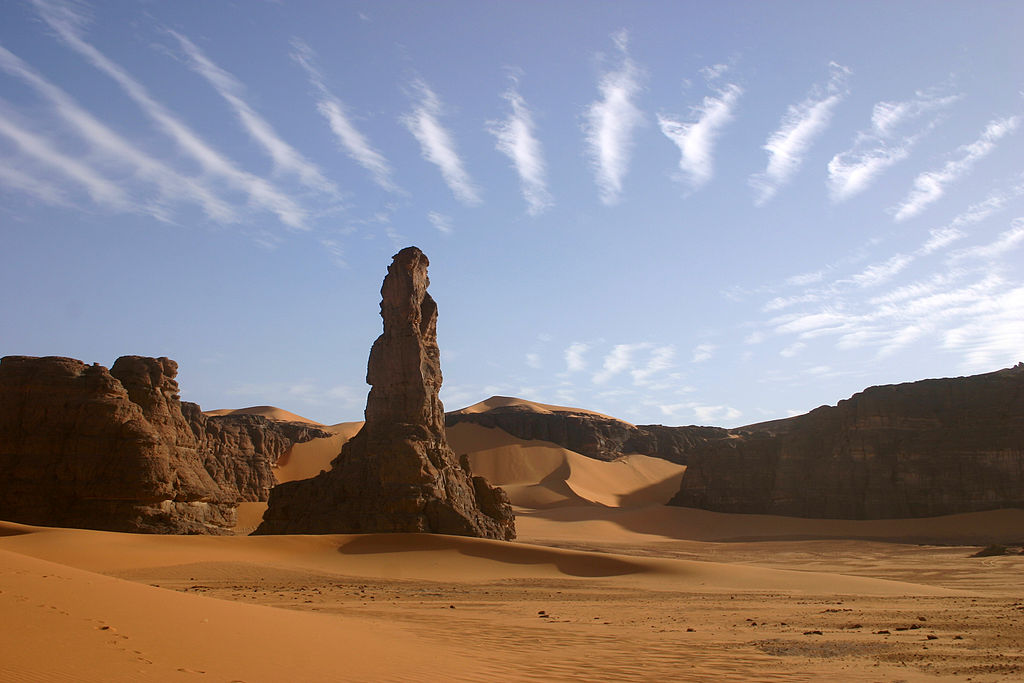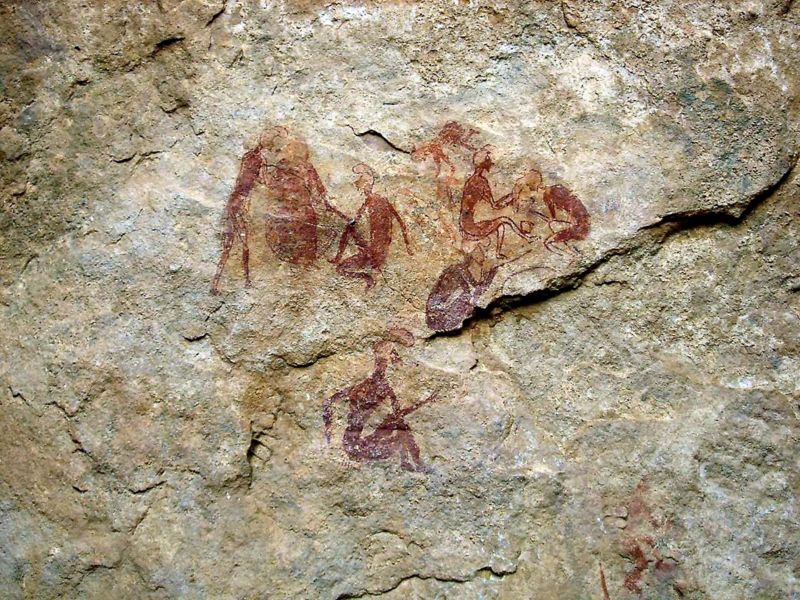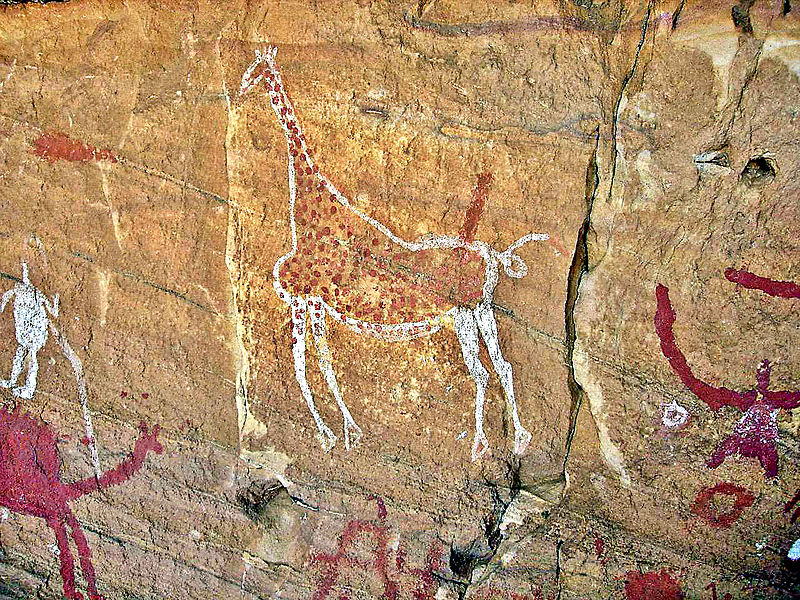The Acacus Mountains or Tadrart Acacus form a mountain range in the desert of the Ghat District in western Libya, part of the Sahara. They are situated east of the Libyan city of Ghat and stretch north from the Algerian border about 100 km. Tadrart is the feminine form of 'mountain' in the Berber languages (masculine: Adrar). The area has a particularly rich array of prehistoric rock art.
The Acacus Mountains have a large variation of landscapes, from differently coloured sanddunes to arches, gorges, isolated rocks and deep ravines (wadis). Major landmarks include the arches of Afzejare and Tin Khlega. Although this area is one of the most arid of the Sahara, there is vegetation, such as the medicinal Calotropis procera, and there are a number of springs and wells in the mountains.
The area is known for its rock-art and was inscribed as a UNESCO World Heritage Site in 1985 because of the importance of these paintings and carvings. The paintings date from 12,000 B.C.E. to 100 C.E. and reflect cultural and natural changes in the area. There are paintings and carvings of animals such as giraffes, elephants, ostriches and camels, but also of men and horses. Men are depicted in various daily life situations, for example while making music and dancing.













